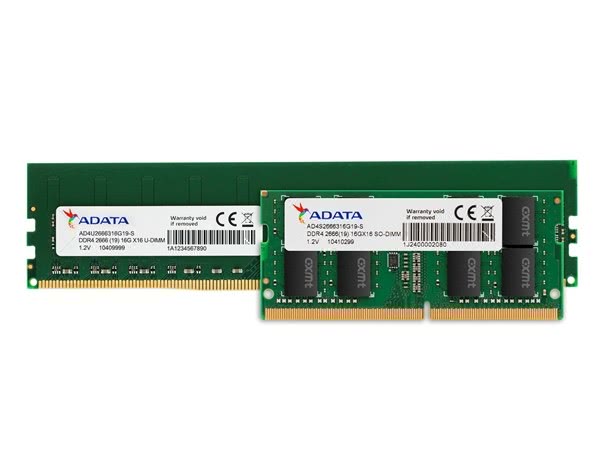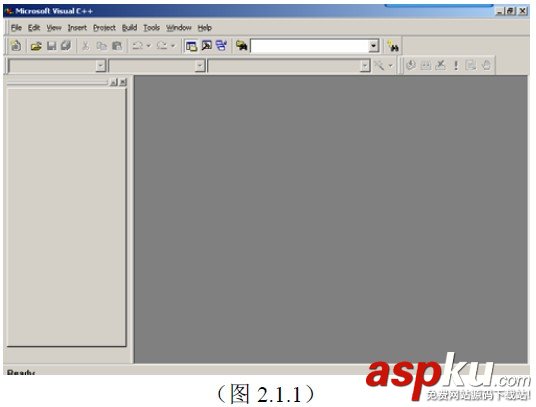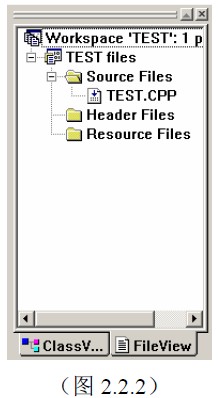C语言中数组允许定义类型的变量,可容纳相同类型的多个数据项,但结构体在C语言编程中,它允许定义不同种类的数据项可供其他用户定义的数据类型。
结构是用来代表一个记录,假设要跟踪图书馆的书籍。可能要跟踪有关每本书以下属性:
- Title - 标题
- Author - 作者
- Subject - 科目
- Book ID - 编号
定义结构体
定义一个结构体,必须使用结构体的struct语句。该struct语句定义了一个新的数据类型,程序不止一个成员。struct语句的格式是这样的:
struct [structure tag]{ member definition; member definition; ... member definition;} [one or more structure variables]; 结构体(structure)标签是可选的,每个成员的定义是一个正常的变量定义,如 int i; 或 float f; 或任何其他有效的变量的定义。在结构的定义的结尾,最后的分号之前,可以指定一个或多个结构变量,但它是可选的。这里是声明书(Book)的结构方式:
struct Books{ char title[50]; char author[50]; char subject[100]; int book_id;} book; 访问结构体成员
要访问结构体的任何成员,我们使用成员访问运算符(.)成员访问运算符是编码作为结构体变量名,并且希望访问结构体部件。使用struct关键字来定义结构体类型的变量。以下为例子来解释结构的用法:
#include <stdio.h>#include <string.h> struct Books{ char title[50]; char author[50]; char subject[100]; int book_id;}; int main( ){ struct Books Book1; /* Declare Book1 of type Book */ struct Books Book2; /* Declare Book2 of type Book */ /* book 1 specification */ strcpy( Book1.title, "C Programming"); strcpy( Book1.author, "Nuha Ali"); strcpy( Book1.subject, "C Programming Tutorial"); Book1.book_id = 6495407; /* book 2 specification */ strcpy( Book2.title, "Telecom Billing"); strcpy( Book2.author, "Zara Ali"); strcpy( Book2.subject, "Telecom Billing Tutorial"); Book2.book_id = 6495700; /* print Book1 info */ printf( "Book 1 title : %s", Book1.title); printf( "Book 1 author : %s", Book1.author); printf( "Book 1 subject : %s", Book1.subject); printf( "Book 1 book_id : %d", Book1.book_id); /* print Book2 info */ printf( "Book 2 title : %s", Book2.title); printf( "Book 2 author : %s", Book2.author); printf( "Book 2 subject : %s", Book2.subject); printf( "Book 2 book_id : %d", Book2.book_id); return 0;} 让我们编译和运行上面的程序,这将产生以下结果:
Book 1 title : C ProgrammingBook 1 author : Nuha AliBook 1 subject : C Programming TutorialBook 1 book_id : 6495407Book 2 title : Telecom BillingBook 2 author : Zara AliBook 2 subject : Telecom Billing TutorialBook 2 book_id : 6495700
结构体作为函数参数
可以传递一个结构作为函数的参数,非常类似传递任何其他变量或指针。访问可以象在上面的例子已经访问类似结构变量的方式:
#include <stdio.h>#include <string.h> struct Books{ char title[50]; char author[50]; char subject[100]; int book_id;};/* function declaration */void printBook( struct Books book );int main( ){ struct Books Book1; /* Declare Book1 of type Book */ struct Books Book2; /* Declare Book2 of type Book */ /* book 1 specification */ strcpy( Book1.title, "C Programming"); strcpy( Book1.author, "Nuha Ali"); strcpy( Book1.subject, "C Programming Tutorial"); Book1.book_id = 6495407; /* book 2 specification */ strcpy( Book2.title, "Telecom Billing"); strcpy( Book2.author, "Zara Ali"); strcpy( Book2.subject, "Telecom Billing Tutorial"); Book2.book_id = 6495700; /* print Book1 info */ printBook( Book1 ); /* Print Book2 info */ printBook( Book2 ); return 0;}void printBook( struct Books book ){ printf( "Book title : %s", book.title); printf( "Book author : %s", book.author); printf( "Book subject : %s", book.subject); printf( "Book book_id : %d", book.book_id);} 让我们编译和运行上面的程序,这将产生以下结果:
Book title : C ProgrammingBook author : Nuha AliBook subject : C Programming TutorialBook book_id : 6495407Book title : Telecom BillingBook author : Zara AliBook subject : Telecom Billing TutorialBook book_id : 6495700
指针结构
非常相似定义指针结构,来定义指向任何其他变量,如下所示:
struct Books *struct_yiibaier;
现在,可以存储结构变量的地址在上面定义的指针变量。为了找到一个结构变量的地址,将使用运算符&在结构体的名字之前,如下所示:
struct_yiibaier = &Book1;
访问使用一个指向结构的结构的成员,必须使用 -> 运算符如下:
让我们重新写上面的例子中使用结构指针,希望这将能够让我们更容易地理解概念:
#include <stdio.h>#include <string.h> struct Books{ char title[50]; char author[50]; char subject[100]; int book_id;};/* function declaration */void printBook( struct Books *book );int main( ){ struct Books Book1; /* Declare Book1 of type Book */ struct Books Book2; /* Declare Book2 of type Book */ /* book 1 specification */ strcpy( Book1.title, "C Programming"); strcpy( Book1.author, "Nuha Ali"); strcpy( Book1.subject, "C Programming Tutorial"); Book1.book_id = 6495407; /* book 2 specification */ strcpy( Book2.title, "Telecom Billing"); strcpy( Book2.author, "Zara Ali"); strcpy( Book2.subject, "Telecom Billing Tutorial"); Book2.book_id = 6495700; /* print Book1 info by passing address of Book1 */ printBook( &Book1 ); /* print Book2 info by passing address of Book2 */ printBook( &Book2 ); return 0;}void printBook( struct Books *book ){ printf( "Book title : %s", book->title); printf( "Book author : %s", book->author); printf( "Book subject : %s", book->subject); printf( "Book book_id : %d", book->book_id);} 让我们编译和运行上面的程序,这将产生以下结果:
Book title : C ProgrammingBook author : Nuha AliBook subject : C Programming TutorialBook book_id : 6495407Book title : Telecom BillingBook author : Zara AliBook subject : Telecom Billing TutorialBook book_id : 6495700
位字段
位字段允许数据在一个结构体包装。这是特别有用的,当内存或存储数据非常宝贵。典型的例子:
包装几个对象到一个机器语言。例如1位标志能够压缩长度
读取外部的文件格式 - 非标准的文件格式可以读出。例如: 9位整数。
C语言允许我们通过结构定义:bit 长度的变量之后。例如:
struct packed_struct { unsigned int f1:1; unsigned int f2:1; unsigned int f3:1; unsigned int f4:1; unsigned int type:4; unsigned int my_int:9;} pack; 在这里,packed_struct包含6个成员:四个1位标志s f1..f3, 一个 4 位类型和9位my_int。
C语言自动包装上述位字段尽可能紧凑,条件是字段的最大长度小于或等于计算机的整数字长。如果不是这种情况,那么一些编译器可以允许,而其他将重叠存储在下一个字段的存储器。
指针和数组:
这是永远绕不开的话题,首先是引用:
struct stuff *ref = &Huqinwei; ref->age = 100; printf("age is:%d/n",Huqinwei.age); 打印可见变化
指针也是一样的
struct stuff *ptr; ptr->age = 200; printf("age is:%d/n",Huqinwei.age); 结构体也不能免俗,必须有数组:
struct test{ int a[3]; int b;};//对于数组和变量同时存在的情况,有如下定义方法: struct test student[3] = {{{66,77,55},0}, {{44,65,33},0}, {{46,99,77},0}};//特别的,可以简化成: struct test student[3] = {{66,77,55,0}, {44,65,33,0}, {46,99,77,0}}; 变长结构体:
可以变长的数组
#include <stdio.h>#include <malloc.h>#include <string.h>typedef struct changeable{ int iCnt; char pc[0];}schangeable;main(){ printf("size of struct changeable : %d/n",sizeof(schangeable)); schangeable *pchangeable = (schangeable *)malloc(sizeof(schangeable) + 10*sizeof(char)); printf("size of pchangeable : %d/n",sizeof(pchangeable)); schangeable *pchangeable2 = (schangeable *)malloc(sizeof(schangeable) + 20*sizeof(char)); pchangeable2->iCnt = 20; printf("pchangeable2->iCnt : %d/n",pchangeable2->iCnt); strncpy(pchangeable2->pc,"hello world",11); printf("%s/n",pchangeable2->pc); printf("size of pchangeable2 : %d/n",sizeof(pchangeable2));} 运行结果
size of struct changeable : 4size of pchangeable : 4pchangeable2->iCnt : 20hello worldsize of pchangeable2 : 4
结构体本身长度就是一个int长度(这个int值通常只为了表示后边的数组长度),后边的数组长度不计算在内,但是该数组可以直接使用。
(说后边是个指针吧?指针也占长度!这个是不占的!原理很简单,这个东西完全是数组后边的尾巴,malloc开辟的是一片连续空间。其实这不应该算一个机制,感觉应该更像一个技巧吧)
结构体嵌套:
结构体嵌套其实没有太意外的东西,只要遵循一定规律即可:
//对于“一锤子买卖”,只对最终的结构体变量感兴趣,其中A、B也可删,不过最好带着struct A{ struct B{ int c; } b;}a;//使用如下方式访问:a.b.c = 10; 特别的,可以一边定义结构体B,一边就使用上:
struct A{ struct B{ int c; }b; struct B sb;}a; 使用方法与测试:
a.b.c = 11; printf("%d/n",a.b.c); a.sb.c = 22; printf("%d/n",a.sb.c); 结果无误。



















